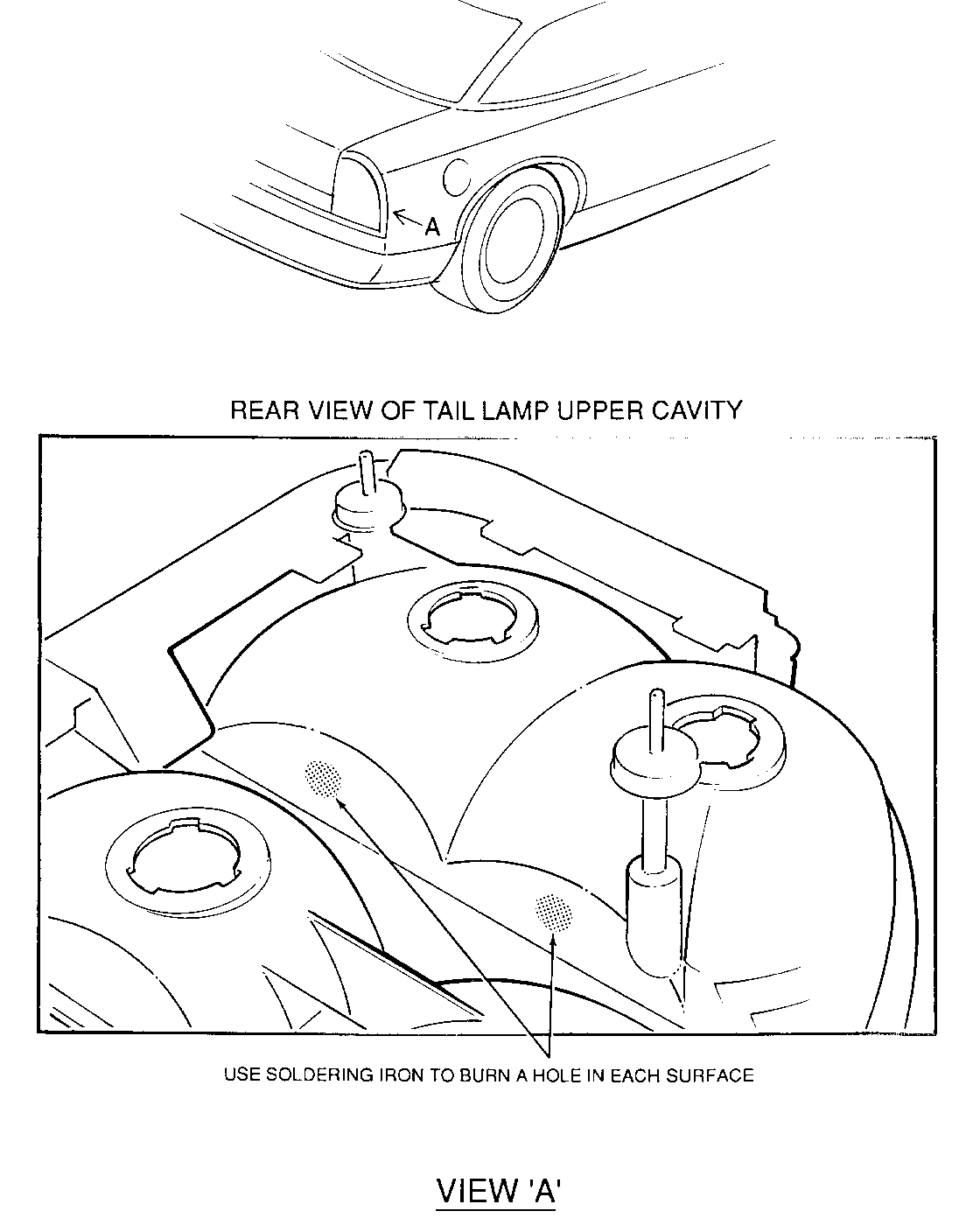MOISTURE IN TAIL LAMPS REMOVE LAMPS/FOLLOW PROCEDURES

SUBJECT: MOISTURE IN TAIL LAMPS (REMOVE LAMP/FOLLOW SERVICE PROCEDURE/ADD VENT HOLES TO LAMP ASSEMBLY)
VEHICLES AFFECTED: 1992 OLDSMOBILE CUTLASS SUPREME SEDAN
THIS BULLETIN IS BEING REVISED TO ADD INFORMATION TO THE CAUSE AND CORRECTION SECTIONS.
Condition:
Moisture in tail lamp upper cavity.
Cause:
A. Vehicles built prior to VIN ND304854 were water tested in plant exposing the lamp upper cavity vent holes to direct water spray.
B. Vehicles built since VIN ND304854 do not have vent holes in the tail lamp upper cavity . Correction:
A. Remove affected lamp from vehicle and remove moisture.
B. Remove affected lamp from vehicle, remove moisture and add vent holes.
Notice: Steps 1, 2 and 4 apply to correction of both A and B, Step 3 only applies to correction of B
1. Hold the lamp with the bulb socket holes facing downward (lens facing upward) and shake the lamp to eliminate as much water as possible.
IMPORTANT: The following step involves using a heat gun to dry the lamp. The plastic parts of the lamp may deform if the heat gun is too hot or applied for too long. To avoid deforming the lamp, use the heat gun for a short amount of time and then allow the lamp surface to cool slightly before applying the heat gun again. To prevent deformation, the lamp should NEVER be too hot to touch.
2. Using heat gun on a low setting, alternate the following steps until the remaining moisture in the lamp has cleared:
a. Force warm air through one of the upper cavity bulb holes.
b. Use the heat gun on the outer surface of the red lens to warm the lens.
3. To add vent holes refer to View A. Use a soldering iron to burn a 4.0 mm (3/16") hole in each surface of the upper cavity. Check for any debris in tail lamp.
4. Re-install tail lamp.
For vehicles repaired under warranty use:
Labor Time: 0.5 Hr.

General Motors bulletins are intended for use by professional technicians, not a "do-it-yourselfer". They are written to inform those technicians of conditions that may occur on some vehicles, or to provide information that could assist in the proper service of a vehicle. Properly trained technicians have the equipment, tools, safety instructions and know-how to do a job properly and safely. If a condition is described, do not assume that the bulletin applies to your vehicle, or that your vehicle will have that condition. See a General Motors dealer servicing your brand of General Motors vehicle for information on whether your vehicle may benefit from the information.
